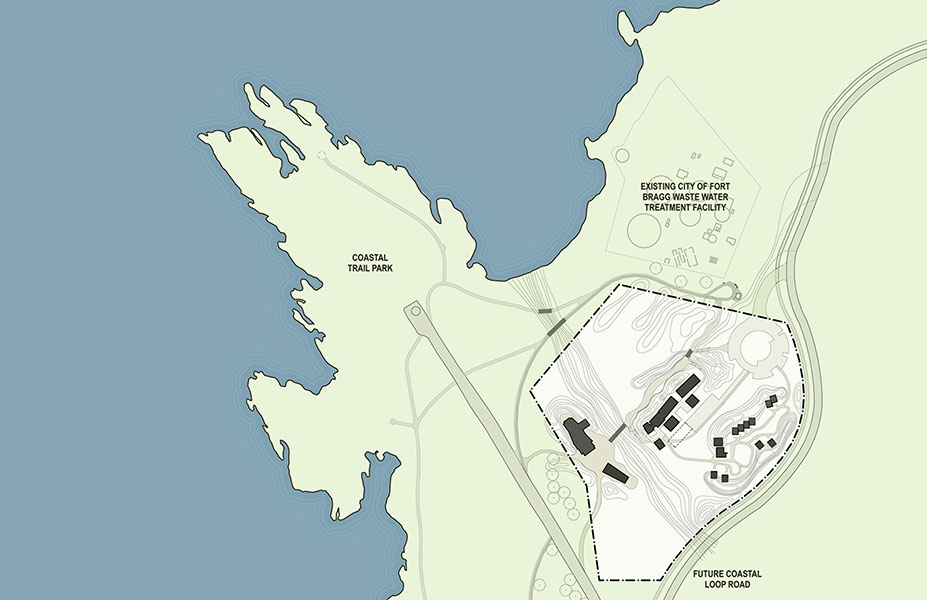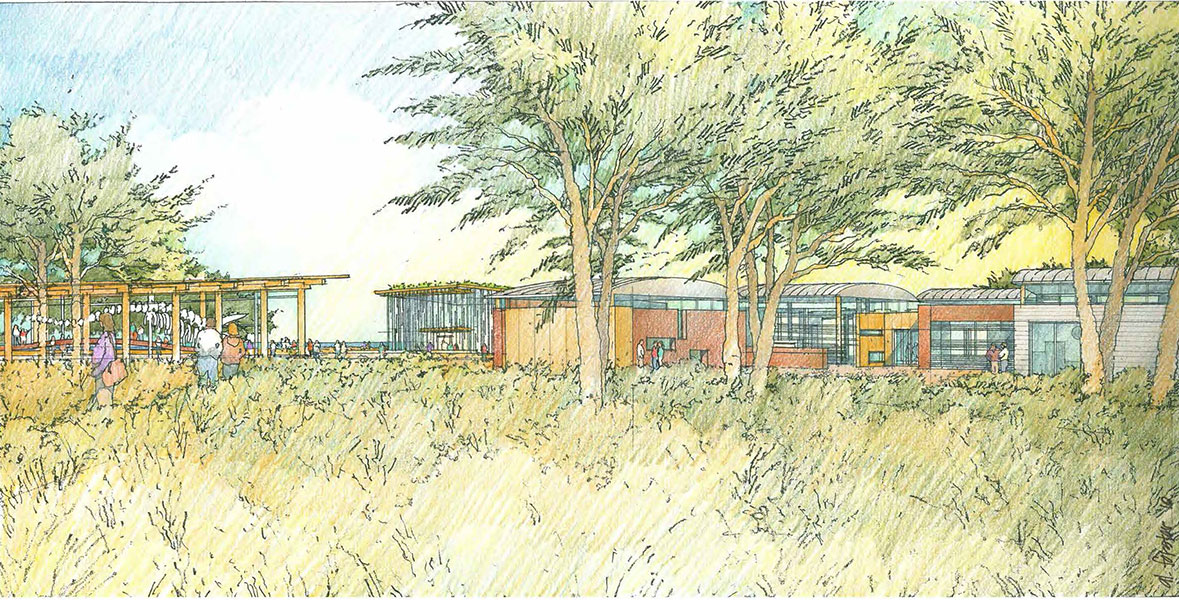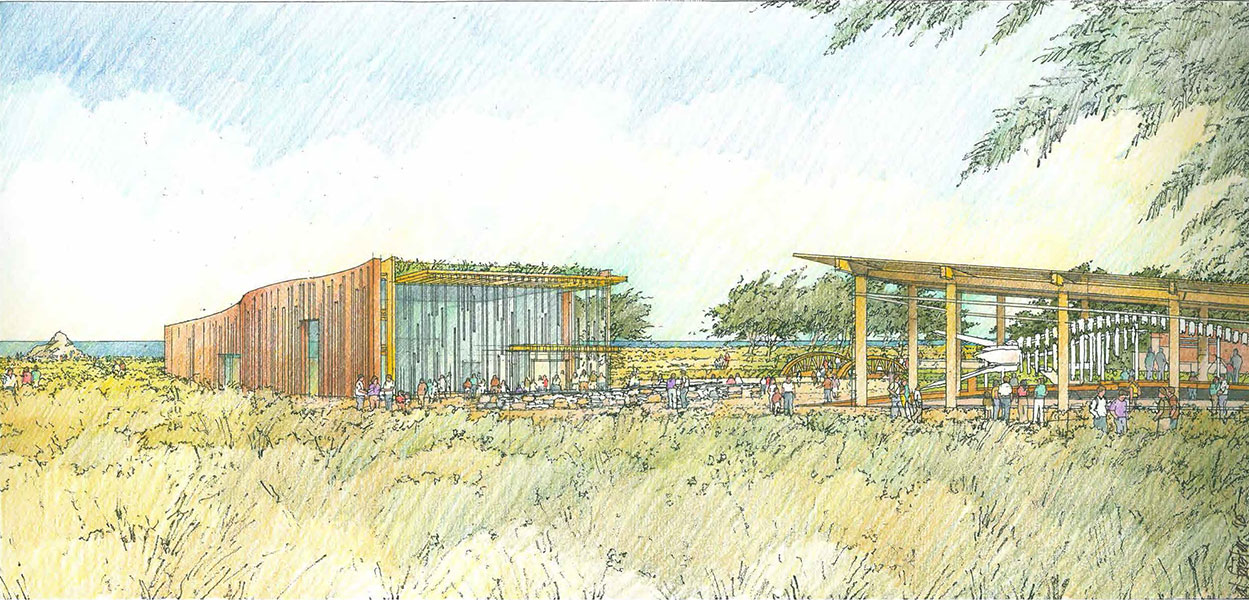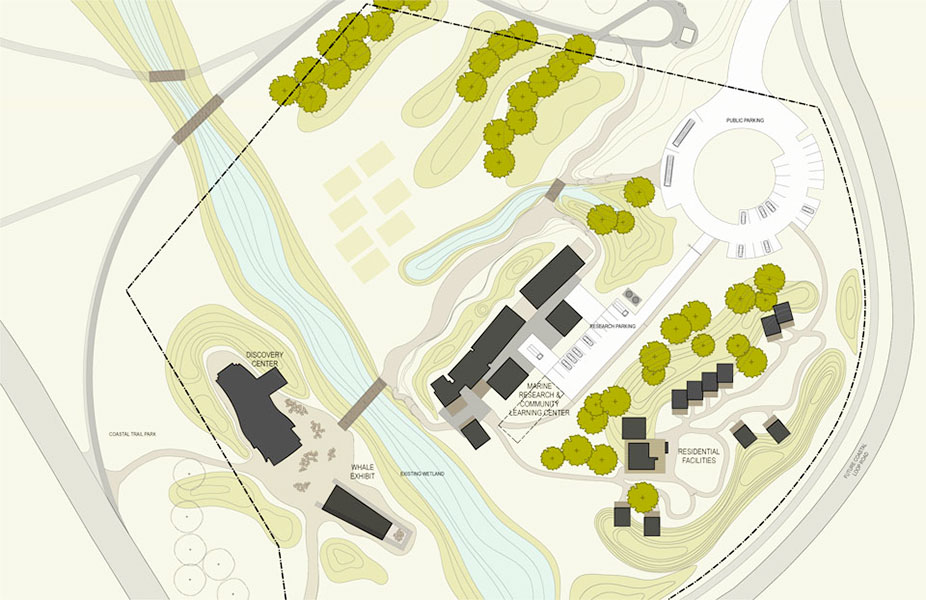NOYO CENTER FOR SCIENCE and EDUCATION
CITY OF FORT BRAGG/SONOMA STATE UNIVERSITY
FORT BRAGG, CA
The Noyo Center for Science and Education combines a world-class marine research laboratory and an interpretive center focused on increasing public understanding and knowledge of marine research and actions that visitors can take to reduce their impacts on the ocean, rivers, forests and sensitive coastal prairie. Associated with the marine research center is lodging for the marine research teams that will utilize the center during their research residencies.
The Noyo Center is a first step in Ft. Bragg’s restoration and renewal of the former lumber mill site that dominated the oceanfront for the past 100 years. Seen from afar – from Highway One, from the nearby oceanfront – this new ensemble will harken visitors. On arriving visitors will at once feel the essence and diversity of the location — from the stewardship and history of the Mill Site and the spectacular coast — to the inviting sense of place for research, interpretation and learning. The Noyo Center is planned as a net-zero energy, zero-carbon footprint project.
The Noyo Discovery Center will educate 60,000 to 80,000 visitors, residents, fisherman, and school children per year – increasing public understanding and knowledge of marine and coastal resources by providing high quality visitor exhibits that are directly tied to the research of the Center and actions that visitors can take to reduce their impacts on the ocean, rivers, forests and coastal prairie. A Whale Exhibit housing one of only ten complete Blue Whale skeleton’s commemorates the significant, yet unsuccessful, community efforts to save this whale that beached at Ft. Bragg in 2009.
- Imagine a field station, at one with the land, nestled into the Mill Site on the Ft. Bragg coast — at once quiet and serene – yet vibrant and energetic — like the ocean nearby — embodying the soul of the Mendocino coast – providing a “natural laboratory for scientific research, innovative education and natural resource stewardship.”
- Imagine a place that emerges from the natural and historic landscape — with connections to the ocean, to the river estuary, to the forests, to the ecology and community of its surroundings.
- Imagine an active environment – with research, interpretive and educational programs — creating “community understanding of ecosystems and global change.” A place that understands and showcases sustainability through its site, building and operations. A place that engages the community. A place that fosters connection and communication and encourages collaboration. A place that is inspiring and encourages creativity.
The architecture of the place grows from coastal California field research stations, from the land, from the people and uses that form the vision. The buildings unfold from the land — with one element leading naturally to another – where buildings are one with the natural environment
AWARDS
2014 – AIA Orange County Design Award
















